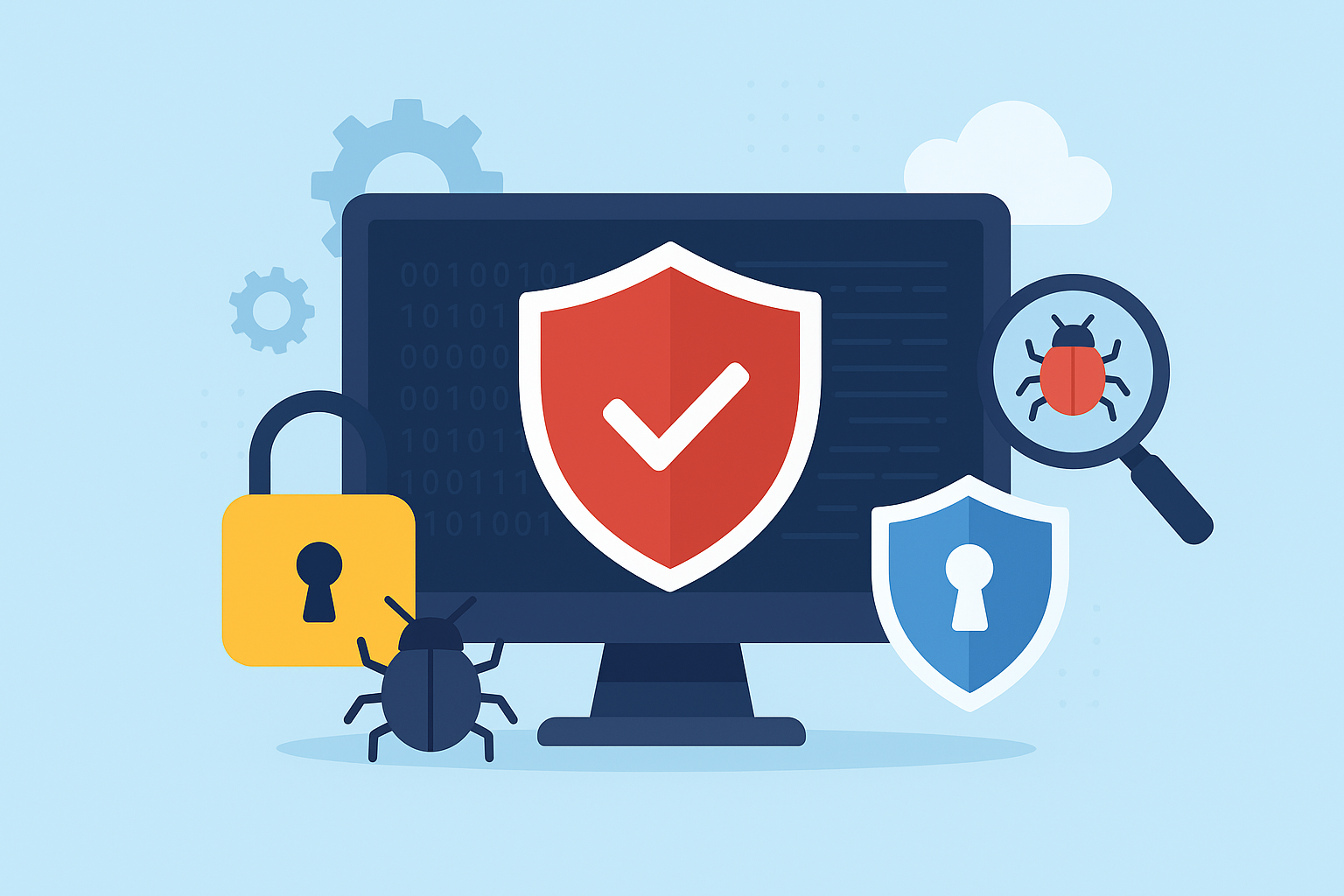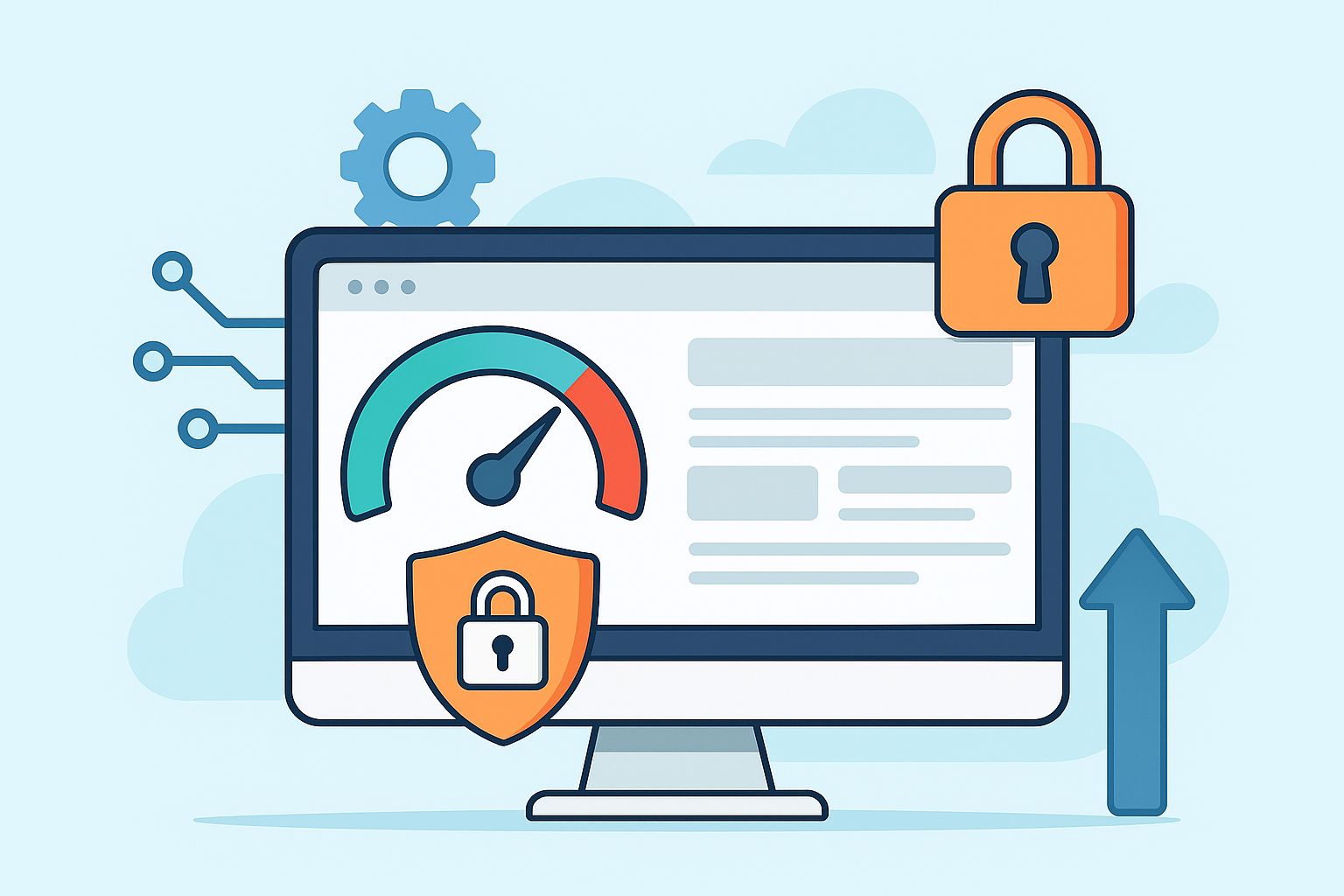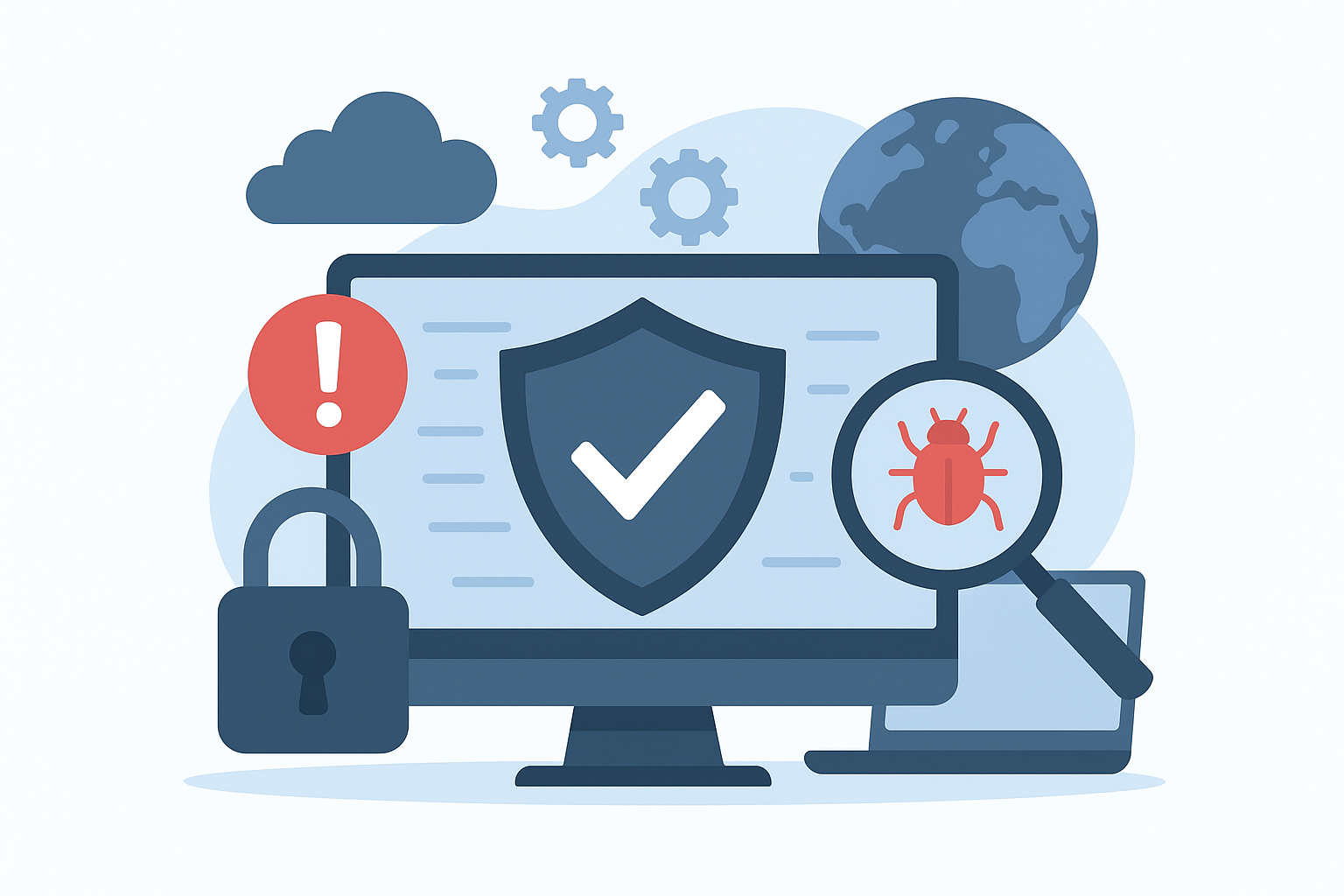The Single Malware Removal Service is an advanced cybersecurity solution designed to detect, isolate, and eliminate malicious code from infected systems efficiently. It focuses on eradicating threats that compromise website performance, data security, and digital integrity. By leveraging deep malware scans, signature-based detection, and heuristic analysis, this service ensures your online environment remains clean, stable, and safe from cyberattacks. Organizations and individual website owners rely on it to restore their digital assets to full functionality after an intrusion.
Introduction
In today’s hyper-connected digital ecosystem, cyber threats are evolving at an alarming rate. Even a minor vulnerability can expose critical business data or compromise the functionality of an entire website. This is where FixHackedSite introduces its professional-grade Single Malware Removal Service, a specialized solution aimed at identifying and eliminating malware infections from any digital infrastructure. Whether it’s a trojan, ransomware, or injected malicious code, this service ensures precise removal with minimal downtime.
The growing frequency of cyber incidents makes it essential for businesses to act quickly and decisively. Delays in response often allow attackers to expand their control, steal data, or damage SEO rankings. With the Single Malware Removal Service, FixHackedSite empowers clients to recover swiftly and prevent re-infection through strategic hardening techniques. The service combines advanced forensics, AI-based detection, and post-removal validation to maintain long-term protection.
In an industry where time is critical, relying on a trusted cybersecurity partner makes all the difference. By choosing FixHackedSite’s specialized service, clients benefit from a complete remediation process that not only removes malware but also restores operational confidence and system resilience.
Understanding Malware and Its Digital Impact
Malware, short for malicious software, encompasses any code or program created with harmful intent. It can infiltrate systems through vulnerabilities, phishing attacks, or compromised plugins. Once embedded, malware can manipulate, steal, or destroy data, often without immediate detection. This makes it one of the most persistent and dangerous threats in the modern digital landscape.
From keyloggers that track user activity to ransomware that locks files for ransom, malware varies in complexity and purpose. The true danger lies in its stealth — many infections remain dormant until triggered by specific conditions. This hidden behavior complicates detection, especially when standard antivirus solutions fail to recognize modified or encrypted variants.
Organizations must understand that malware infection is not just a technical issue; it’s a reputational and financial risk. Compromised systems can lead to data breaches, regulatory penalties, and loss of customer trust. Recognizing the full scope of malware’s digital impact is the first step toward implementing effective remediation through specialized services like the Single Malware Removal Service.
The Importance of a Targeted Malware Removal Approach
Generic antivirus solutions operate on predefined signatures, identifying known threats efficiently but struggling against zero-day exploits or polymorphic malware. This limitation creates a need for a targeted malware removal approach, tailored to detect and neutralize unique infections. The Single Malware Removal Service focuses on this specificity, analyzing the infected system at both file and process levels.
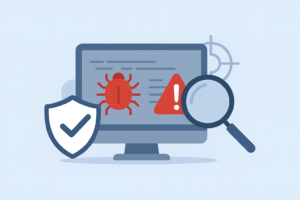 Targeted removal ensures that each element of the malicious code — whether a corrupted database entry, an infected PHP script, or a malicious cron job — is systematically identified and removed. Unlike automated cleanup tools that can damage legitimate files, professional malware removal emphasizes forensic accuracy and recovery integrity.
Targeted removal ensures that each element of the malicious code — whether a corrupted database entry, an infected PHP script, or a malicious cron job — is systematically identified and removed. Unlike automated cleanup tools that can damage legitimate files, professional malware removal emphasizes forensic accuracy and recovery integrity.
Moreover, a targeted approach enhances post-cleanup stability. It not only removes the infection but also identifies the root cause — such as weak authentication, outdated plugins, or misconfigured servers. By addressing these weaknesses, IT teams can prevent future breaches and fortify their overall security posture.
Key Features of a Professional Single Malware Removal Service
A professional malware removal service operates with a combination of automation, expert analysis, and proactive defense mechanisms. Core features typically include real-time malware detection, comprehensive system scans, and manual verification by cybersecurity specialists. These layers ensure that no trace of the infection remains, even within complex databases or hidden server directories.
Another defining feature is forensic transparency. Clients receive detailed reports outlining the type of infection, source of intrusion, and steps taken to remove it. This level of documentation not only proves compliance for organizations under regulatory scrutiny but also provides valuable insights for long-term defense planning.
Furthermore, the integration of machine learning and AI technologies in modern malware removal processes enhances detection precision. By continuously analyzing behavior patterns, these systems can detect even emerging malware variants that lack traditional signatures, offering unmatched reliability and speed.
How the Detection Process Works in a Single Malware Removal Service
The detection process in a Single Malware Removal Service follows a methodical, multi-layered approach. It begins with automated scanning, where specialized tools analyze system files, code structures, and database entries for anomalies. These scans look for signatures, hash mismatches, and behavioral irregularities that suggest the presence of malicious activity.
Once suspicious elements are identified, cybersecurity professionals conduct manual analysis to verify false positives and understand the infection’s behavior. This stage often involves reverse-engineering scripts or observing how malware interacts with system processes. The goal is not only to remove the immediate infection but to map its entire impact zone across the system.
After confirmation, precise isolation and extraction techniques are employed to neutralize the threat. Whether it’s deleting infected files, repairing altered code, or replacing compromised scripts, the service ensures complete remediation. The combination of automation and human expertise makes this detection process highly accurate and reliable.
Advanced Threat Analysis and Forensic Investigation
A critical aspect of the Single Malware Removal Service is Advanced Threat Analysis, which allows cybersecurity teams to understand the full scope of an attack before initiating remediation. This phase involves dissecting the infection through digital forensics — analyzing file hashes, network logs, and system behaviors to trace the origin of the malicious activity. The data collected during this stage reveals how the threat infiltrated the environment and which vulnerabilities were exploited.
Forensic investigation also provides contextual intelligence. By comparing the infection with known malware databases and behavioral patterns, professionals can determine whether the attack was automated, targeted, or part of a larger botnet campaign. This intelligence plays a vital role in creating long-term security strategies, enabling teams to mitigate similar risks in the future. The Single Malware Removal Service uses this data-driven approach to ensure that remediation efforts are not only immediate but also preventive in nature.
Once forensic analysis is complete, remediation plans are developed based on infection vectors and system dependencies. This tailored approach ensures that malware is eradicated without interrupting legitimate services or compromising business continuity. The integration of threat intelligence frameworks and advanced analytics ensures that even complex, polymorphic malware is neutralized at the root level, preventing any chance of reactivation.
Manual Versus Automated Malware Removal Techniques
Malware removal can be accomplished through two primary methodologies: manual and automated techniques. Automated methods rely on predefined algorithms and databases to detect and eliminate known threats rapidly. While efficient for minor infections, automated tools often fail to address complex malware that evolves dynamically or hides within encrypted layers.
In contrast, manual removal is conducted by cybersecurity experts who perform in-depth code audits, system inspections, and behavioral analysis. This process allows for nuanced decision-making, ensuring that every trace of malicious code is removed without corrupting essential system files. Manual remediation is particularly effective for server-level infections, where precision and understanding of underlying architecture are critical.
A hybrid approach, combining both manual and automated techniques, is considered the most effective. Automation accelerates the detection process, while human expertise ensures accuracy and completeness. The Single Malware Removal Service leverages this hybrid model, offering clients both speed and reliability in threat removal. By balancing automation and manual intervention, the service guarantees comprehensive system integrity and long-term stability.
The Role of AI and Machine Learning in Malware Detection
Modern malware is increasingly adaptive and evasive, making traditional detection methods insufficient. To counter these sophisticated threats, the Single Malware Removal Service integrates AI (Artificial Intelligence) and Machine Learning (ML) technologies into its detection framework. These intelligent systems continuously learn from new attack patterns and predict potential threats based on behavioral analysis.
AI-driven detection operates by identifying anomalies rather than relying solely on known signatures. For example, if a file or process begins exhibiting unusual activity — such as excessive network communication or memory manipulation — AI systems flag it as suspicious for further inspection. This capability enables real-time defense even against previously unknown malware variants.
Machine learning further enhances this process by improving accuracy over time. By analyzing vast datasets of malicious behaviors, ML algorithms refine their predictive capabilities, minimizing false positives. The result is a dynamic, self-evolving defense system. When integrated into the Single Malware Removal Service, AI and ML create a proactive cybersecurity shield, capable of adapting faster than attackers can innovate.
Database and Server-Level Infection Management
Malware often embeds itself within databases and server configurations, making removal far more complex than surface-level cleanup. Infections at this level can compromise data integrity, enable backdoor access, and disrupt essential website functions. The Single Malware Removal Service employs specialized tools to detect and cleanse these deep-rooted infections without disrupting critical business operations.
Database infections typically occur through SQL injection or compromised CMS components. Once infiltrated, attackers may insert malicious scripts into tables, manipulate user data, or exploit permissions to gain escalated control. Removing such threats requires careful extraction and restoration using verified backups and data sanitization protocols. This ensures both the removal of malicious code and the preservation of legitimate content.
Server-level infections pose an even greater risk, as they can allow attackers to manipulate configurations, intercept data, or execute unauthorized commands. The Single Malware Removal Service utilizes forensic-level scanning and permission analysis to isolate infected directories, repair compromised scripts, and restore secure communication between system components. This deep remediation approach safeguards operational reliability and data authenticity.
Importance of Backup and Recovery in Malware Incidents
In cybersecurity, backup and recovery serve as the ultimate safety nets during malware attacks. Even the most sophisticated defense systems can be breached, making reliable backups an essential part of any incident response strategy. The Single Malware Removal Service incorporates data recovery planning as a core component of its remediation process, ensuring minimal disruption during and after an attack.
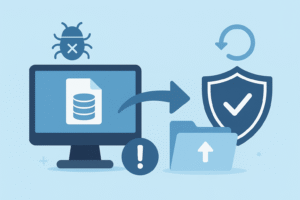 A well-maintained backup enables organizations to restore systems quickly to a pre-infection state. However, backups themselves must be regularly tested and secured, as malware can target them to sabotage recovery efforts. Professional services implement off-site and incremental backup strategies, ensuring data remains intact and isolated from live production systems.
A well-maintained backup enables organizations to restore systems quickly to a pre-infection state. However, backups themselves must be regularly tested and secured, as malware can target them to sabotage recovery efforts. Professional services implement off-site and incremental backup strategies, ensuring data remains intact and isolated from live production systems.
Once malware is removed, the recovery process involves validating data integrity, testing system performance, and reconfiguring access credentials. This ensures that no residual infection persists within the environment. Through structured backup and recovery protocols, the Single Malware Removal Service provides clients with the confidence to resume operations seamlessly while maintaining full data authenticity.
Real-Time Monitoring and Post-Removal Validation
The process of malware removal doesn’t end once the infection is eradicated. Continuous real-time monitoring and post-removal validation are crucial for maintaining system stability. The Single Malware Removal Service includes advanced monitoring tools that observe system activity, detect residual threats, and verify that no malicious components remain active.
Post-removal validation involves running multiple scans across different layers — file systems, databases, and application logs. This ensures that all artifacts associated with the original infection have been successfully neutralized. Validation reports are then generated to confirm the system’s clean state, providing clients with verifiable proof of security.
In addition, real-time monitoring helps detect any re-infection attempts or suspicious activities that may indicate ongoing exploitation. The Single Malware Removal Service employs continuous telemetry and threat intelligence feeds to proactively identify and mitigate emerging threats. This post-remediation vigilance ensures enduring protection and peace of mind for clients operating in high-risk digital environments.
The Connection Between Website Vulnerabilities and Malware Infections
Every malware infection begins with a vulnerability — a flaw in code, configuration, or access control that provides attackers with a gateway. Websites running outdated software, unpatched CMS plugins, or insecure server permissions are prime targets for exploitation. The Single Malware Removal Service not only removes existing infections but also identifies the underlying weaknesses that allowed the intrusion to occur in the first place.
By analyzing website architecture and system logs, cybersecurity experts can determine whether the infection originated from a cross-site scripting (XSS) attack, SQL injection, or unauthorized file upload. Understanding these vectors allows them to harden the affected systems effectively. A single misconfigured directory or weak administrative password can open doors to massive data leaks or server-level compromise.
Furthermore, addressing vulnerabilities post-infection ensures long-term resilience. The Single Malware Removal Service incorporates vulnerability assessments into its process, highlighting outdated frameworks, insecure dependencies, and potential misconfigurations. By patching these flaws and applying best security practices, organizations can drastically reduce their exposure to future attacks and maintain consistent operational security.
Role of Firewalls and Intrusion Detection Systems in Malware Prevention
A comprehensive cybersecurity defense depends heavily on firewalls and Intrusion Detection Systems (IDS). While malware removal services focus on cleansing infections, firewalls and IDS play a preventive role — detecting, blocking, and alerting administrators of suspicious activity before it causes harm. The Single Malware Removal Service emphasizes integrating these tools to create a multi-layered defense mechanism for clients.
Firewalls act as the first line of defense, filtering inbound and outbound traffic to ensure only legitimate communication passes through. Web Application Firewalls (WAFs), in particular, are essential for preventing common web-based exploits such as SQL injection or code injection. Meanwhile, IDS solutions monitor network activity, scanning for anomalies or patterns that indicate attempted breaches.
When combined with post-removal monitoring, these technologies provide an ongoing security posture that minimizes the risk of re-infection. The Single Malware Removal Service team often recommends and implements customized firewall configurations and intrusion detection systems as part of a broader remediation and protection framework, ensuring that once a system is cleaned, it stays secure.
The Economic and Reputational Cost of Malware Infections
Malware infections are not just a technical issue — they have significant economic and reputational consequences. Businesses face potential downtime, data loss, and loss of customer confidence. Even short-term disruptions can result in lost sales, compliance violations, and recovery expenses. The Single Malware Removal Service helps mitigate these damages by restoring systems efficiently and safeguarding brand credibility.
When a website is compromised, search engines may blacklist it, displaying warning messages to users. This not only affects web traffic but can also damage long-term SEO rankings. Clients may lose trust in an organization’s ability to protect their data, leading to customer attrition. In addition, the cost of forensic analysis, system repair, and post-breach audits can strain operational budgets.
By utilizing professional malware removal services, businesses can recover faster and with minimal financial impact. The Single Malware Removal Service also focuses on post-recovery optimization, ensuring that systems are hardened, monitored, and compliant with data security regulations. This proactive approach prevents repeat incidents and protects the brand’s digital integrity.
Compliance and Data Security in Malware Removal
In today’s regulatory landscape, data protection compliance is a critical factor when dealing with malware incidents. Organizations must ensure that their remediation processes adhere to frameworks such as GDPR, ISO 27001, HIPAA, and PCI-DSS, depending on their industry. The Single Malware Removal Service aligns with these standards by employing data-safe cleaning methods, secure data handling, and full incident documentation.
During malware removal, sensitive customer and operational data must remain confidential. Professionals use encrypted communication channels and secure backup systems to prevent any data exposure during analysis or restoration. Compliance documentation also includes detailed forensic reports outlining the nature of the infection, remediation steps, and verification of data integrity post-removal.
Failure to meet compliance standards can result in heavy fines and loss of trust. The Single Malware Removal Service ensures clients remain compliant while maintaining operational continuity. By integrating data protection measures within the remediation process, the service not only removes threats but also reinforces a company’s legal and ethical commitment to cybersecurity excellence.
Integrating Malware Removal into a Broader Cybersecurity Strategy
Effective cybersecurity is not about isolated solutions but a comprehensive ecosystem of protection mechanisms. Integrating the Single Malware Removal Service into a broader strategy allows organizations to build resilience against future threats. This integration includes combining malware removal with endpoint protection, vulnerability assessments, and continuous threat intelligence.
A holistic strategy begins with understanding the attack surface — every device, server, or software component that connects to the network. Once identified, organizations can establish a security baseline, monitor for deviations, and respond promptly to anomalies. The malware removal process becomes a central component of this ecosystem, serving both as a remediation and prevention measure.
Moreover, continuous learning from each incident strengthens security maturity. Every malware infection reveals insights into attacker behavior, system weaknesses, and defensive gaps. The Single Malware Removal Service leverages this intelligence to help clients evolve their defenses, turning past incidents into future protection strategies.
Case Studies: Successful Malware Removal Implementations
Real-world case studies offer invaluable insights into how Single Malware Removal Services can effectively restore compromised systems and strengthen cybersecurity frameworks. One notable example involves a financial institution that suffered a data breach through an injected JavaScript malware. The attack redirected users to phishing websites, resulting in data exposure and significant downtime. Using advanced forensic analysis, cybersecurity professionals identified the infected scripts, removed malicious payloads, and implemented web application firewalls to prevent reoccurrence.
In another instance, an e-commerce company experienced a ransomware infection that encrypted product and transaction data. Through the Single Malware Removal Service, specialists performed controlled decryption, isolated compromised databases, and restored clean backups. The process involved not only the removal of ransomware executables but also the restructuring of database permissions to prevent future unauthorized access.
These success stories demonstrate the effectiveness of a structured remediation approach. The Single Malware Removal Service consistently achieves full recovery by combining forensic intelligence, manual precision, and post-cleanup monitoring. Each case reinforces the importance of professional intervention — ensuring infected systems are restored safely without compromising data or long-term functionality.
The Future of Malware Removal and Cybersecurity Automation
The cybersecurity landscape is evolving rapidly, with attackers employing AI, polymorphic malware, and autonomous bots to breach systems. To combat these threats, the Single Malware Removal Service is increasingly integrating cybersecurity automation and predictive defense technologies. Future malware removal will rely on self-learning systems capable of detecting and neutralizing infections before they impact operations.
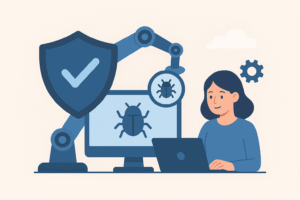 Automation in cybersecurity allows for faster incident response, minimizing human error and improving accuracy. However, automation alone cannot replace human expertise. The future lies in hybrid cybersecurity models — where automated systems handle detection and preliminary analysis, while security professionals conduct validation, threat containment, and final restoration. This symbiosis ensures precision and adaptability.
Automation in cybersecurity allows for faster incident response, minimizing human error and improving accuracy. However, automation alone cannot replace human expertise. The future lies in hybrid cybersecurity models — where automated systems handle detection and preliminary analysis, while security professionals conduct validation, threat containment, and final restoration. This symbiosis ensures precision and adaptability.
Emerging trends like threat intelligence sharing, cloud-based scanning, and real-time behavioral monitoring will redefine how malware is identified and removed. The Single Malware Removal Service continues to evolve with these advancements, offering clients next-generation protection that adapts dynamically to the changing digital threat landscape.
Choosing the Right Malware Removal Partner
Selecting the right cybersecurity partner is crucial for ensuring reliable and long-term protection. Many organizations underestimate the importance of expertise, transparency, and post-removal support when choosing a malware removal service. The Single Malware Removal Service offered by professional cybersecurity teams focuses on delivering both technical accuracy and strategic defense improvements.
When evaluating potential partners, organizations should assess their experience with similar threat environments, use of advanced diagnostic tools, and commitment to compliance standards. It’s also essential to verify that the provider offers detailed forensic reporting, continuous monitoring, and follow-up assessments. These qualities distinguish a professional service from automated or low-cost solutions that may leave residual threats undetected.
The Single Malware Removal Service sets itself apart by emphasizing precision, confidentiality, and long-term client trust. Through a combination of technology, human expertise, and ongoing protection, it ensures that businesses can operate confidently in an increasingly hostile digital world.
Conclusion
In the evolving digital landscape, malware continues to be a persistent and complex threat. Businesses that fail to act swiftly risk operational disruptions, data loss, and reputational damage. That’s where FixHackedSite steps in — offering a specialized Single Malware Removal Service designed to eliminate infections with unmatched accuracy and restore complete system integrity.
This service does more than remove malware; it empowers organizations with proactive defense strategies, ensuring their websites and servers remain protected from future attacks. Through detailed forensic analysis, intelligent automation, and continuous validation, FixHackedSite delivers the peace of mind every business deserves.
Ultimately, cybersecurity resilience begins with decisive action. By partnering with a trusted provider like FixHackedSite, businesses can turn a malware crisis into an opportunity to strengthen their digital ecosystem, reinforce compliance, and secure their place in the online world with confidence.
